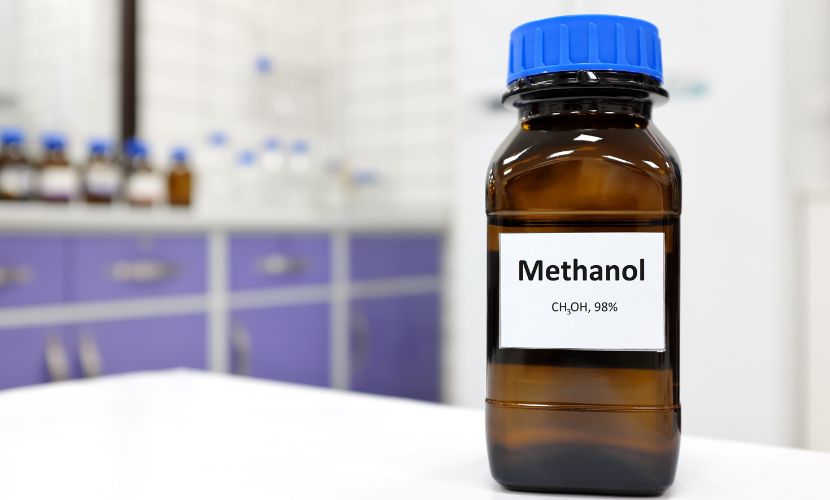Methanol Market Overview
The global methanol market has witnessed significant growth over the years, driven by its versatile applications in various industries such as automotive, chemicals, and energy. Methanol, also known as wood alcohol, is a colorless, flammable liquid used as a feedstock for the production of chemicals like formaldehyde, acetic acid, and methyl methacrylate. Its increasing demand in the production of clean fuels and energy storage systems, as well as its role as a feedstock for various chemical processes, underscores its importance in the global economy. With the ongoing transition towards sustainable energy sources, methanol is positioned as a key player in the development of green technologies.
Methanol Market Size
In 2023, the global methanol market size reached approximately 88.00 million metric tons (MMT). This robust market size reflects a growing interest in methanol as a cleaner alternative to traditional fossil fuels and a vital component in the production of various chemical products. The market is projected to grow at a compound annual growth rate (CAGR) of 3.8% from 2024 to 2032. By the end of this forecast period, the market is expected to achieve a volume of around 123.18 MMT, driven by increasing industrial demand, technological advancements, and supportive government policies promoting cleaner energy sources.
Methanol Market Share
The methanol market is characterized by a competitive landscape, with several key players dominating the market share. Major companies such as Methanex Corporation, Zagros Petrochemical Company, and Mitsubishi Gas Chemical Company, Inc. hold significant portions of the market due to their extensive production capabilities and global reach. The market share is also influenced by regional dynamics, with Asia-Pacific emerging as a leading region in methanol production and consumption, driven by rapid industrialization and a growing automotive sector. In addition, advancements in production technologies and strategic collaborations among industry players further contribute to shaping the methanol market landscape.
Methanol Market Trends
The methanol market is currently experiencing several key trends that are shaping its growth trajectory:
- Green Methanol Production: There is a growing emphasis on sustainable production methods, with increased investment in green methanol derived from renewable resources such as biomass and carbon capture technologies.
- Rise in Demand for Clean Fuels: The push for cleaner energy sources has led to increased demand for methanol as a fuel alternative in transportation and power generation, positioning it as a crucial component in the transition towards renewable energy.
- Technological Advancements: Innovations in production technologies, including improved catalytic processes and more efficient production methods, are enhancing the efficiency and cost-effectiveness of methanol production.
- Growing Use in Chemicals and Plastics: Methanol’s versatility as a feedstock in the production of chemicals and plastics continues to drive its demand, with applications ranging from solvents to antifreeze and automotive products.
- Regulatory Support: Government initiatives and regulations promoting the use of alternative fuels and chemicals are supporting methanol market growth, particularly in regions focused on reducing carbon emissions.
Methanol Market Analysis
The methanol market analysis indicates a positive outlook for the coming years, driven by a confluence of factors. Increasing global energy demands, coupled with the shift towards sustainable energy solutions, positions methanol as a crucial alternative. Its role in producing clean fuels and as a building block for chemicals reinforces its significance in various industries. The market dynamics are influenced by fluctuations in raw material prices, environmental regulations, and technological advancements. Furthermore, the COVID-19 pandemic has highlighted the importance of supply chain resilience, prompting companies to invest in robust production facilities. The market’s growth is supported by strategic collaborations and investments in research and development, aimed at improving production efficiency and sustainability. As companies align their strategies with sustainability goals, the methanol market is poised for continuous growth and innovation.
Methanol Market Segmentation
The methanol market can be segmented based on various criteria, including:
- By Application:
- Fuel: Used as an alternative fuel in automotive and power generation sectors.
- Chemical Feedstock: Essential for producing formaldehyde, acetic acid, and other chemicals.
- Solvents and Adhesives: Utilized in various industrial applications.
- By Production Method:
- Natural Gas Reforming: The most common method, involving the conversion of natural gas to methanol.
- Coal Gasification: A significant method in regions rich in coal resources.
- Biomass and Renewable Sources: Emerging methods focused on sustainability.
- By Region:
- North America: Significant production capacity and consumption.
- Asia-Pacific: Leading region in methanol production and demand.
- Europe: Growing focus on green methanol initiatives.
- By End-User Industry:
- Automotive: Increasing adoption of methanol as a clean fuel alternative.
- Chemicals: Major demand from the chemical manufacturing sector.
- Energy: Applications in energy generation and storage.
Get a Free Sample Report with Table of Contents
Methanol Market Growth
The growth of the methanol market is attributed to several key factors. Firstly, the rising global demand for energy, driven by industrialization and population growth, is propelling methanol consumption as a cleaner fuel alternative. Secondly, the ongoing shift towards sustainable practices and renewable energy sources has led to increased investment in green methanol production, which utilizes renewable resources and carbon capture technologies. Additionally, the expanding automotive and chemical industries further bolster methanol’s demand as a versatile feedstock. Lastly, supportive government policies and regulations aimed at reducing carbon emissions are creating a favorable environment for methanol market expansion. These factors collectively contribute to the anticipated growth of the methanol market in the coming years.
Recent Developments and Challenges in the Methanol Market
The methanol market is currently witnessing significant developments and facing challenges that influence its trajectory. Recent advancements include the increasing investment in green methanol technologies, with several companies exploring renewable feedstocks and carbon capture methods to produce methanol sustainably. For instance, projects aimed at converting biomass to methanol are gaining traction, aligning with global sustainability goals.
Moreover, collaborations between industry players are becoming more common, facilitating knowledge sharing and technological innovation. However, the methanol market is also grappling with challenges, such as fluctuating raw material prices and geopolitical tensions affecting supply chains. The reliance on natural gas and coal for methanol production makes the market susceptible to price volatility in these commodities. Additionally, the global push for decarbonization presents both opportunities and challenges, as companies must navigate the transition while maintaining profitability. Addressing these challenges and leveraging opportunities for innovation will be crucial for the future success of the methanol market.
Key Players in the Methanol Market
Several key players dominate the methanol market, each contributing to its growth and development. Notable companies include:
- Methanex Corporation: The world’s largest producer and supplier of methanol, Methanex operates several production facilities globally and is a leader in sustainable practices.
- Zagros Petrochemical Company: A major player in the Middle East, Zagros focuses on methanol production from natural gas.
- Mitsubishi Gas Chemical Company, Inc.: Engaged in the production of methanol and its derivatives, Mitsubishi is known for its technological advancements.
- Celanese Corporation: This company integrates methanol production with its chemical operations, focusing on innovative applications.
- PROMAN: A key player in the global methanol market, PROMAN specializes in production and marketing, with a focus on sustainability.
- SABIC: A leading petrochemical company, SABIC’s methanol production is integral to its diverse chemical portfolio.
- OCI NV: Active in methanol and fertilizers, OCI NV has a strong presence in Europe and the Americas.
- LyondellBasell Industries N.V.: This company operates a variety of chemical plants, including those for methanol production.
- Yankuang Group Co., Ltd: A prominent coal producer in China, Yankuang also has significant methanol production capabilities.
- BASF SE: A global chemical giant, BASF engages in methanol production as part of its diverse chemical offerings.
- Eastman Chemical Company: Known for its innovative solutions, Eastman utilizes methanol in various chemical processes.
- China National Petroleum Corporation (CNPC): A major state-owned enterprise, CNPC is involved in methanol production as part of its extensive energy portfolio.
- PETRONAS Chemicals Group Berhad: This Malaysian company produces methanol alongside other petrochemical products.
- Gujarat Narmada Valley Fertilizers & Chemicals Limited: An Indian player, this company focuses on methanol production for agricultural applications.
- Others: The methanol market also includes numerous regional players and emerging companies, contributing to its dynamic landscape.
Thanks for allowing guest posting https://fastpanda.in/



